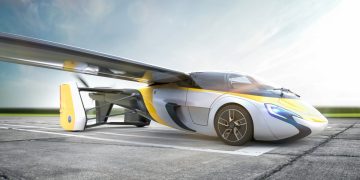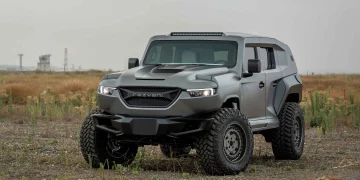The world of transportation is undergoing a significant transformation, with automation leading the charge in reshaping how vehicles operate, including specialized vehicles. Automation technologies, such as autonomous driving, robotics, and machine learning, are already starting to have a profound impact on sectors like logistics, construction, emergency services, and agriculture, where specialized vehicles are critical to operations. But the question remains: Can automation technologies truly revolutionize the operation of specialized vehicles, making traditional methods obsolete?
In this article, we will explore how automation technologies are influencing specialized vehicles, their potential benefits, the challenges they face, and whether these technologies can indeed fully transform the way we operate these vehicles.
1. The Rise of Autonomous Specialized Vehicles
The shift towards autonomous driving is one of the most exciting developments in the world of transportation, and specialized vehicles are no exception. These vehicles are equipped with a range of sensors, cameras, and advanced algorithms that allow them to navigate and operate without human intervention.
Key Examples:
- Autonomous Trucks in Logistics: Companies are developing autonomous long-haul trucks for transporting goods across highways. These trucks can operate without human drivers, potentially reducing labor costs and increasing efficiency in the logistics sector.
- Autonomous Garbage Trucks: Some cities are experimenting with self-driving waste collection vehicles. These trucks use sensors to navigate the streets, stopping at designated locations to collect trash without requiring a human driver.
- Autonomous Construction Equipment: Heavy machinery like excavators, bulldozers, and haul trucks used in construction can be equipped with autonomous features to assist with tasks such as digging, hauling, and leveling. These machines can operate with greater precision and without the need for human supervision, reducing risks and improving productivity on construction sites.
- Autonomous Agricultural Vehicles: In agriculture, self-driving tractors, harvesters, and plows are becoming a reality. These autonomous machines can perform routine tasks such as plowing fields, planting crops, and harvesting, all while improving the accuracy and efficiency of agricultural operations.
Potential Benefits:
- Increased Efficiency: Autonomous vehicles can work continuously, without the need for breaks or rest periods, leading to higher productivity and faster operations.
- Cost Reduction: Automation reduces the need for human labor, leading to cost savings in terms of salaries, insurance, and training.
- Improved Safety: Autonomous systems can potentially reduce the number of human errors that lead to accidents, ensuring that specialized vehicles operate more safely, especially in hazardous environments.
However, while the idea of fully autonomous specialized vehicles is appealing, there are still significant hurdles that need to be overcome before automation can completely replace human operators in every situation.
2. Automation in Routine Tasks: Reducing Human Error and Enhancing Precision
In many specialized vehicle operations, automation technologies are already being applied to perform routine tasks, assisting human operators and reducing the risk of human error.
Key Areas of Automation:
- Autonomous Load Handling: Many specialized vehicles, such as cranes, forklifts, and recycling trucks, are now being fitted with automation systems that can handle loading and unloading tasks. These systems use sensors, artificial intelligence, and machine learning to identify, pick up, and place objects with a high degree of accuracy. In some cases, these systems work alongside human operators, acting as assistive technologies to improve productivity and precision.
- Route Optimization: Automation can enhance route planning and navigation for specialized vehicles, especially in sectors like waste management, construction, and logistics. Through telematics, vehicles can collect real-time data, such as traffic conditions, weather patterns, and roadblock updates, which can be processed by AI algorithms to optimize routes and minimize delays.
- Automated Maintenance Alerts: Maintenance schedules can be automated through sensor-based technologies that monitor the health of the vehicle. Sensors detect issues like tire pressure, engine temperature, or oil levels, automatically sending alerts to fleet managers about potential problems before they lead to breakdowns. This predictive maintenance helps extend the lifespan of vehicles, reducing repair costs and downtime.
Benefits:
- Accuracy and Consistency: Automation allows for highly accurate and consistent task performance, such as material handling or route optimization, which is particularly valuable in sectors requiring high precision, like construction and agriculture.
- Safety: By automating dangerous or repetitive tasks, automation reduces the likelihood of accidents caused by human fatigue or errors, improving overall safety in the workplace.
While automation has made great strides in routine and assistive tasks, complete autonomy in all types of operations is still a long way off due to complex and unpredictable environments.
3. Enhanced Data Collection and Machine Learning for Optimization
A crucial aspect of automation is the ability to collect vast amounts of data from specialized vehicles and use that data to optimize performance and improve efficiency. Machine learning and artificial intelligence (AI) are at the heart of this revolution, enabling vehicles to learn from their operations and improve over time.
Key Applications:
- Predictive Analytics: Through machine learning algorithms, vehicles can analyze data about their operational patterns, including fuel consumption, route efficiency, and driver behavior, to make future operations more efficient. For example, trucks can predict when they are likely to encounter traffic or when they need to refuel based on historical data.
- Real-Time Performance Monitoring: Telematics and sensors embedded in specialized vehicles allow operators to track the vehicle’s performance in real-time, including speed, fuel efficiency, brake conditions, and engine health. AI can then process this information to make immediate recommendations for better performance, such as adjusting driving speed to improve fuel efficiency or recommending maintenance actions to prevent costly breakdowns.
- Adaptive Learning: Advanced AI systems can adapt based on the specific operational needs of a business. For instance, agricultural vehicles may adjust their harvest strategies based on soil conditions, crop types, or even weather patterns.
Benefits:
- Operational Efficiency: Machine learning algorithms can continuously analyze vast data points to suggest improvements in route planning, fuel consumption, or maintenance scheduling, all of which contribute to better overall performance.
- Cost Savings: By optimizing operations and improving fuel efficiency, businesses can lower operational costs and improve profitability.
While the data collection and machine learning aspects of automation are highly promising, there are still challenges related to integrating these technologies into all types of specialized vehicles and ensuring their accuracy in dynamic, real-world environments.

4. Human-AI Collaboration in Specialized Vehicle Operations
One of the most practical applications of automation in specialized vehicles is human-AI collaboration. Rather than replacing human operators entirely, automation technologies are being integrated into vehicles to assist drivers and operators in performing tasks more efficiently, safely, and accurately.
Key Examples:
- Driver Assistance Systems: Many specialized vehicles are now equipped with advanced driver assistance systems (ADAS), such as lane-keeping assist, adaptive cruise control, and collision avoidance systems. These technologies help human operators navigate challenging environments, such as construction sites or urban streets, by offering real-time alerts or taking corrective actions when needed.
- Collaborative Robots (Cobots): In environments like warehouses or factories, collaborative robots are working alongside human workers to perform tasks like material handling, assembly, or inspection. These robots are designed to complement human efforts rather than replace them, enhancing productivity and reducing physical strain on workers.
- Autonomous Assistance in Complex Environments: In situations where human operators must navigate challenging environments, such as forests, construction zones, or disaster-stricken areas, AI can assist by providing real-time situational awareness, GPS mapping, and hazard identification.
Benefits:
- Efficiency and Safety: Automation in collaboration with human operators can help increase efficiency and safety by providing real-time feedback and offering decision-making support when necessary.
- Flexibility: By maintaining a human operator at the helm, vehicles can retain flexibility and adaptability, especially in environments where fully autonomous systems may struggle.
5. Challenges to Full Automation in Specialized Vehicles
Despite the exciting potential of automation, there are several significant challenges that must be addressed before automation can completely transform the operation of specialized vehicles.
Key Challenges:
- Complexity of Specialized Operations: Specialized vehicles often operate in dynamic, unpredictable environments, such as construction sites, forests, or urban settings. In these conditions, automation technologies need to handle complex decision-making, such as avoiding obstacles, assessing risk, and interacting with human workers and other vehicles.
- Regulatory and Legal Issues: The widespread deployment of autonomous specialized vehicles is contingent on regulatory approval. Governments and regulatory bodies need to establish standards and policies that ensure safety, insurance, and liability are appropriately addressed for autonomous vehicles.
- High Initial Costs: The upfront costs of implementing automation technologies—such as sensors, AI systems, and high-end computing infrastructure—are still quite high. This may deter small businesses or industries from adopting automation on a large scale.
Conclusion: A Hybrid Future of Specialized Vehicle Operations
While automation technologies have the potential to revolutionize the way specialized vehicles are operated, the complete replacement of human involvement is unlikely to happen overnight. Automation will likely complement human operators, assisting with routine tasks and providing critical support in complex environments.
The future of specialized vehicle operations seems to be a brid model—where human operators and autonomous systems work together to optimize efficiency, safety, and productivity. Automation in specialized vehicles is not about replacing human labor but about enhancing capabilities, reducing risks, and improving operational outcomes.
With continued advancements in AI, machine learning, and robotics, we are on the verge of a new era in specialized vehicle operations—one that will transform industries, reduce costs, and improve the safety and performance of the vehicles that drive our economies forward.











































